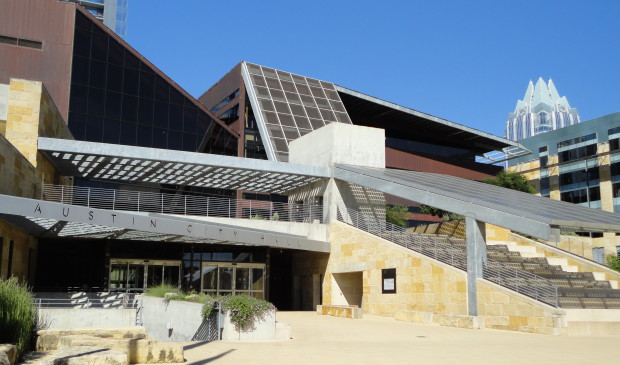Council adopts sweeping procedural changes
Friday, January 30, 2015 by
Tyler Whitson After a full week of debate about transparency, efficiency and public input, City Council has adopted a new set of meeting procedures and a committee structure that will overhaul the legislative process.
Council members voted unanimously at their first regular meeting Thursday to adopt the ordinance after incorporating several amendments.
Council based some of the amendments, such as loosening proposed restrictions on public comment at Council meetings and whittling down the original number of committees, on an outpouring of public feedback that started with a public hearing last week.
“Congratulations,” Mayor Steve Adler said to his colleagues immediately after the vote. “There were a lot of people that were not sure whether we could ever agree on something that was as significant as this. And the fact that we were able to do it in the first month is something that I’m proud of and I thank you all for.”
Early in the conversation, District 5 Council Member Ann Kitchen outlined Council’s goals. “Our primary purpose here is to provide the opportunity for transparency and more meaningful public engagement earlier in the process so that the community has the potential and the opportunity to talk to us earlier, when we are talking about how we’re shaping an item,” she said.
The new structure will consist of nine committees, made up of four Council members each, and the Austin Energy Utility Oversight Committee, made up of the full Council.
The nine committees will be Audit and Finance; Mobility; Public Utilities; Health and Human Services; Public Safety; Planning and Neighborhoods; Open Space, Environment and Sustainability; Housing and Community Development; and a combined version of the Economic Opportunity Committee and the Technology, Innovation and Creative Industries Committee.
Adler will appoint the committee members and chairs, and Council will ratify his appointments. When, where and how often the committees will meet is to be determined.
The new procedures include a system in which many items go through a corresponding committee for a recommendation before being added to the Council agenda. They also provide members of the public with the opportunity to comment on these items at regular committee meetings, earlier in the legislative process than with current policies.
Once these items make it to Council, the procedures will allow up to eight citizens to speak for two minutes each per item. Speakers may sign up without choosing a side, but no more than four speakers will be able to sign up in favor of or against an item. Four Council members may choose to allow more public comment, the procedures of which will be at Council’s discretion.
Citizen communication, a dedicated time for members of the public to speak to a quorum of Council for three minutes on any item, will remain as it has been.
Public input procedures for items that have not gone through a committee will remain as they have been, and Council agendas will note which items have not gone through a committee so that members of the public are aware of the opportunity to give input.
The ability of members of the public to comment outside of citizen communication on specific items that have already had a committee hearing was the last provision that Council added before adopting the plan. Previous drafts required that four Council members request additional public input for it to occur.
As she hinted she would do, District 2 Council Member Delia Garza proposed an amendment to allow 20 people to speak for two minutes each. After a lengthy debate that resulted in a tighter limit and other changes, Council unanimously adopted the amendment.
Boards and commissions will have an official avenue to send items to committees, and potentially to Council, for consideration. After a vote, a chair will be able to specify a preferred committee and send a resolution to the mayor, who will assign the item and pass the request along to city staff, who will coordinate with the committee. The item can then make its way to a Council agenda if the committee so chooses.
“This was intended to make sure that those recommendations find a home,” Adler said. “Just to make sure that nothing gets lost.”
In addition to structure and procedure changes, the ordinance includes provisions that Council members believe will make information more accessible to the public, including an email system that will notify subscribers when a new Council or committee agenda is available.
Council also unanimously adopted a resolution creating a Task Force on Community Engagement and directing it to “report back to the Council in six months with a description of existing City community engagement tools, innovative techniques and technologies used across the country; identification of best practices; and recommendations for enhancing existing resources, including fiscal implications.”
Throughout discussions of the new ordinance, Council members have referred to this task force as playing a pivotal role in improving policies. The six-month deadline also corresponds to what Garza called at the initial public hearing a “trial run.”
As with most ordinances, the changes should take effect approximately 10 days from passage, which would be Feb. 8.
Photo by M.Fitzsimmons (Own work) [CC BY-SA 3.0 or GFDL], via Wikimedia Commons
You're a community leader
And we’re honored you look to us for serious, in-depth news. You know a strong community needs local and dedicated watchdog reporting. We’re here for you and that won’t change. Now will you take the powerful next step and support our nonprofit news organization?



